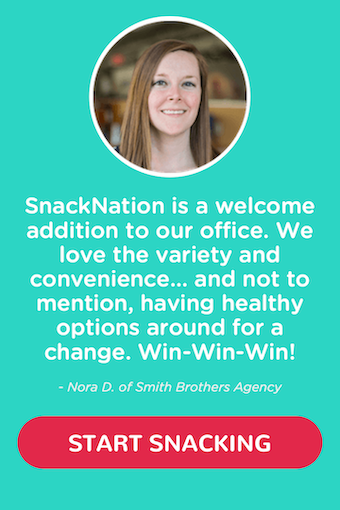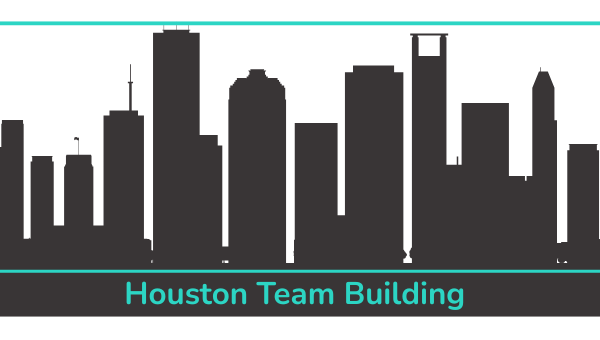
Office moves start out exciting. You envision the finished product—everyone in your company working and thriving in a shiny new, perfectly organized office.
The panic sets in when you realize you have to figure out how to prepare an office move and organize everything in that shiny new office.
Office moves involve an overwhelming number of literal and figurative moving parts. Obviously, you have to move all the stuff, but you also need to consider employees’ happiness, transitional workflows, reorganization, adjustment periods, and so much more.
Don’t worry—we’ve made a list to get you ready to handle every aspect of your office move.
Many of these pointers came straight from our Facebook group of Office Managers! See what nuggets of wisdom our community has to offer and jump into the conversation. Join the group here.
As you go through this list, remember to do what many in our group say is the most important part of the moving process: Breath.
Phase 1: Planning
12 – 6 months before the move
1. Select one place to organize office move notes and to-do items.

First, figure out where and how to record and organize all notes, documents, to-do lists, and other move-related items. Centralizing information will keep you from pulling out your hair later—when you remember you have a office move timeline in Google Drive, a to-do list in Box, and a list of handwritten employee comments in…one of your notebooks, preferably not the one that seems to have vanished from your work bag.
2. Organize key documents.

Now use the method you established in step one to organize important documents, including insurance records, contracts, agreements, and other records.
If you don’t yet have contracts and agreements, you can simply carve out a space for them to help you stay organized later on.
3. Announce the move.

Plan a detailed email, newsletter segment, town hall presentation, or brief video to tell employees about the big move.
The announcement should be comprehensive, regardless of the format you select. The communication needs to tell employees everything they need to know. In fact, the more detail you put into the communication, the easier it will be to wrap your head around all the steps of your office move.
As you create the announcement, be sure to translate any applicable items to your master to-do list. For example, if your announcement reassures employees they will have a complete “office move checklist for employees” of to-dos before moving day, then you need to include “making and distributing checklist” as an action item in your timeline.
Here are some items to include in your announcement:
- New office name and address
- Moving date/dates
- Key features of the new office
- Justification for the move (A quote from the CEO or other key decision maker is the perfect way to explain the decision to move—and even get them excited for the transition.)
- What employees need to do right now, if anything
- What future moving information employees should expect to receive
After the initial announcement, you’ll want to plan a way to talk to employees throughout the move. Move on to step 4!
4. Talk to employees.

After the announcement has a few weeks to set in, talk to employees to get their feedback. Seek feedback on aspects of the move or the new office that you can reasonably control and work into your planning process, including:
- Changing workspace needs (Some employees may want to request standing desks, lamps, privacy screens, etc.)
- Equipment needs (Replace broken keyboards, cracked screens, etc.)
- Seating changes (Some employees may need or want to change what teams and people they sit near.)
- Workstyle preferences, especially if your new space will include elements of both open and private floorplans.
- Design wish items or recommendations
- Any issues that restrict people from carrying heavy boxes and helping with moving work
You can deliver this communication in multiple ways:
- Communicate via department/division managers
- Send out a survey
- Host one-on-one meetings if your company is small
- Use your company’s email delivery tool
- Use your company’s internal Facebook group
After you get the first communication out, create a plan for subsequent sends. You’ll probably want to send one communication a month until moving day, if the complexity of your move calls for it. If your company has an internal communications team, enlist their help to make sure your messages are on point.
5. Establish your budget and purchasing process.

Get a budget (preferably on paper) from your company leaders and establish guidelines for completing all move-related purchases. Will you be able to use a company card? Will you have to submit invoices? Who (if anyone) will need to approve your purchases or vendor contracts?
This step will help you envision the moving process. For example, if you need a three-person team to sign off on all purchases and contracts, then you’ll be able to plan extra time for all to-dos involving purchases.
6. Establish and record key details.
Confirm and record key details that could affect the move. These include:
- Employee headcount
- Size of current office
- Size of new office
7. Make lists of what you have and lists of what you need.

Now it’s time to make inventory lists of all things big and small. Make two lists:
- Things you’re taking
- Things you’re leaving behind
The lists should illuminate some needs you might otherwise overlook, especially if you cross-reference them with your new office’s floor plan.
For example…
- If the office move involves a complete design overhaul, and you’ll be leaving behind all trash cans and whiteboards, you might need to purchase new versions of those necessities to match the new look.
- If you’re pulling off a move on a tight budget, making an inventory list will remind you that you do in fact need to pack everything lurking in that old supply closet.
- If your new kitchen is twice the size of your old one, but your “taking” list only has a few basics, then you might need to get a bunch of new kitchen stuff.
8. Talk to managers to establish move-related workflow strategies.

Moving is hard; juggling work while moving is super hard. Encourage managers to develop comprehensive plans for managing workflows throughout the moving process, especially if they have any critical deadlines that fall within the moving time frame. Remind them to keep the move in mind as they take on and plan new projects.
9. Get volunteers for a moving committee.
Don’t try to do everything alone. See if anyone wants to join a moving committee!
Be sure to outline duties before you make your appeal. Some standard responsibilities include:
- Planning
- Packing
- Unpacking
- Organizing
- Office designing and decorating
Float this idea with your supervisors to see if you can get approval for the team to complete move-related work during office hours. This would definitely inspire more volunteers.
10. Create a separate email address for move-related questions.
People will have questions—lots of questions—about the office move. Try to separate the office move from your regular duties by creating an email address just for move-related questions and correspondence.
Phase 2: Packing and Preparing
6 – 3 months before the move
1. Ask for vendor recommendations.

Before you spend a minute on research, seek answers from experts who’ve organized more than their fair share of office moves. Join our State of the Executive Assistant and State of the Office Manager Facebook groups and ask for vendor recommendations and general advice.
What vendors and services do you even need? Here are some things almost any office move requires:
- Movers/moving crew
- Trucks
- Boxes
- Clean-up crew and cleaning service
2. Secure movers/moving crew.
Your moving crew will define your office move.
After you get recommendations, ask the moving companies on your list a few questions to pinpoint:
- Flexibility (If you need them to come early or stay late, will they accommodate without fees?)
- Fee structure (Do they charge per job or per hour?)
- Reviews and reliability (What are former customers saying?)
- Services included (Do they clean up or help pack?)
Tip: Try to find movers that include everything—the trucks, boxes, and cleanup. If you can’t find a company to cover all the bases, then just move on to the next steps.
3. Pick out moving boxes.

At first glance, this task seems simple and easy; why do it months in advance? Just take a look at the extensive selection of moving boxes and crates on the market, and you’ll understand why. There are giant stackable crates, rentable bins, classic cardboard boxes, moving pods, and more.
Your box selection should be as individual as your move. Arrive at the perfect box decision by considering your budget, your timeline, your inventory, and your moving manpower.
4. Lock down moving trucks and loading/unloading locations.
If you haven’t chosen to go with an all-in-one company that manages pricing and securing trucks, then you should definitely tackle this to-do early.
You’ll want to pinpoint the same features for the trucks as you did for your movers:
- Flexibility (If you need them to come early or stay late, will they accommodate without fees?)
- Fee structure (Do they charge overage if you get stuck in traffic?)
- Reviews and reliability (What are former customers saying?)
- Services included (Do they clean up or help pack?)
Once you have trucks lined up, it’s time to coordinate arrivals and departures. Work with your current and new building managers to find ideal loading and unloading times and spaces. The spaces need to accommodate your trucks without disrupting traffic. If either building has underground loading docks, then make sure your trucks will clear all entrances and exits.
5. Select a cleaning service and cleanup crew.

If your movers don’t clean up your old space, then you need to find someone to do that—unless your building will handle it. (Ask your building manager about this if you’re not sure. You don’t want to pay for unnecessary cleaning, and you also don’t want to get stuck with fees for not cleaning.)
Does your new building include an ongoing cleaning service? If not, then you will need to set that up. If you’re pleased with the service in your current building, then find out if that company can clean your new place and simply update the address on your existing service contract.
6. Do a few reconn walks.
Even the most detail-oriented people can miss a few moving details. Do a few long, slow walks around the office and make notes, especially when you notice things that could:
- Present moving obstacles
- Require major preparation
- Be easily forgotten
You might have a giant, permanently affixed company sign that will require major manpower for removal and reinstallation. You might also remember that the green trash can in the middle of the wall is only there to cover the massive hole Taylor left in the drywall when he was wheeling in the yeti ice sculpture for last year’s holiday party.
7. Downsize.
If you use your pre-move time wisely, you could actually reduce the items you even have to move. Take some time to carefully review inventory and tag items with throw-away stickers. You can do one purge a week so you don’t get overwhelmed. The long, slow effort will help you avoid haphazardly discarding things at the last minute…just because you don’t feel like packing. (It also helps you avoid packing and moving a bunch of junk you really don’t need.)
8. Plan an office warehouse sale if needed.
If you’re getting rid of big-ticket items, such as desks and chairs, plan an office warehouse sale so you can recoup some money to put toward new items.
9. Start packing.
Start packing early to avoid an overwhelming move. Complete the process in short, manageable increments. Divide your items into a three-pronged list. Get going on “early bird” items and make a packing plan for the others.
- Early birds. These are rarely used, but “keeper” items you can pack immediately and never miss.
- Make-do items. These are items that are nice to have, but not crucial.
- Absolute necessities. These are the items you’ll need to pack the day before, or even the day of, the move.
10. Host moving committee meetings.

Evaluating the scale of your move should tell you how frequently this group will need to meet. Usually, weekly meetings should cover all the bases.
Figure out exactly what you want to discuss or get help on before the meetings. Send out a simple agenda so attendees can come to the meeting with ideas in tow.
Your first few meetings will probably revolve around planning and talking. Try to get some good packing and organizing into your meetings as you get closer to move-in day.
11. Talk to employees.

Continue your ongoing conversation with employees. They will have questions.
Here’s how to focus your communications in this phase:
- As questions come in, post them into your communications in Q&A format. With hope, this will reduce the questions flooding your inbox.
- Status updates. Everyone will want to know what’s going on. Tell employees what items you have completed and what you have yet to accomplish so everyone feels informed.
- Changes in day-to-day life. Pinpoint how the move will affect employees’ day-to-day routines. Definitely cover parking in the new office space, especially if it’s a different structure than the one your old building uses. If there will be space assignments, passes, or fobs, then employees will want to know when they will receive those items.
- New neighborhood information, especially if you’re planning a long-distance move. Tell employees about local emergency numbers, places to eat, amenities, transportation hubs, etc. If you have the time, turn this information into a dedicated web page or packet.
- Reiterate vital information from the announcement email. This is not repetitive; it’s helpful. (In fact, this info is so crucial, you might want to print notices to post around the office to make sure everyone commits the new information to memory.)
- New office name and address
- Moving date/dates
- Key features of the new space
The office furniture specialists at Calibre also agree that communicating key office moving information with your employeees is vital and have some useful productivity office hacks you can use once you’ve moved to your new office space.
12. Create new seating arrangements.
For this step, you’ll want to get a detailed floor plan for the new office if you don’t already have one. There are also online tools available to you to manage office seating in the new floor plan.
Use the employee feedback you collected to draw up the new plan. Send it out for everyone to review so you have plenty of time to make any requested changes.
Set a cut-off date for changes; you will need an absolutely final seating chart to make the rest of your packing a success.
Phase 3: Moving and Organizing
3 – 0 months before the move
1. Label the boxes and the new office space to ensure everything goes to the right place.

The office move experts from our State of the Office Manager Facebook group recommend coming up with a labeling system that makes it crystal clear where all the boxes should go.
You can use any system you want—letters and numbers or colors and shapes—as long as the labels on the boxes correspond with the labels in the new office space. This will make it easy for movers to match.
For example, you can give every team a color, and every employee a number. Mark sections of the office with tape matching the team’s color, and mark each individual’s space with their number. Give employees labels with their color and number to put on their boxes.
2. Talk to employees.
Your last few moving communications should clear up any last-minute employees questions and concerns. Let everyone know:
- Where they need to be (Provide any necessary building access information. Before you relay this information, you’ll need to secure any necessary key fobs and codes to hand out.)
- What they need to do, especially packing and labeling instructions.
Also, push out those key moving details just one more time:
- New office name and address
- Moving date/dates
- Key features of the new space
3. Connect all utilities in the old building.

Connect the phone systems, electricity, internet, and water at the new office. Disconnect any service related to your old building, unless a building manager handles that.
4. Finish packing absolute necessities.
Yep, it’s the time. You’re almost there.
5. Create an organizing and decorating plan.
Just as you planned to pack in phases, you can plan to unpack, organize. and decorate in phases. Consider transitioning your moving committee members into a permanent “office design committee” to help you.
You’ll probably find your unpacking and organizing plan mirrors your packing plan in many ways.
- Unpack absolute necessities. What items do you need to unpack and organize immediately to help employees do their best work?
- Unpack make-do items. What items could wait a week or two?
- Unpack out of sight, out of mind items. (How can you organize items people rarely use but still need?
- Polish and spruce. Now that everything has a place, how can you tweak and improve the organization of your new office? What decorations and design work does the new space need?)
6. Frequently check on the new building.
Check in with your new building manager often to make sure everything is going smoothly. Ensure that all utilities were connected.
Plan a walkthrough about two weeks out to make sure everything is clean and intact—ready for your team.
7. Request help with unpacking absolute necessities.
Focus your appeal on any IT experts in your company. A majority of your necessities might require wiring and connecting computers and phones.
8. Move!
9. Unpack the absolute necessities you established above.
10. Plan a party to celebrate your moving success.

We use the term “party” loosely. You’ll probably be just a smidge tired after the move. But that’s all the more reason to celebrate your hard work. Get some champagne or non-alcoholic bubbly and some simple, healthy snacks, and you’ve got yourself a party.
Cheers to you—an office move expert!
Speaking of experts…did we leave anything out of this office moving list? We want this post to be as helpful as possible, so let us know what we should add!







It is a wonderful article to read. You have mentioned almost every details regarding office moving plans and execution techniques.
Thanks, Michael!
I just finished moving an office and I will move another one next month but I loved your article because I was able to see if I did everything I was supposed to do. Great ideas as well!
Nice blog here! The prospect of moving your entire business to a new location is overwhelming. After all, in your current office you know where everything is and how everything is organized. When you think about all the documents, furniture, and equipment that you’ll have to move, the task can seem entirely impossible.
Nice information on this blog. Your blog is very helpful for move the office. Thanks a lot for this beauty Enjoying article with me. I appreciate it very much!
Thanks for explaining everything in details. Very informative post.
Thanks for this informative blog!
You have explained everything about office moving. It’s really helpful when we think about a move.
Keep Sharing.
Thanks, Colin!
Thanks for this! Super helpful. You guys always have the best articles
Thank you Thania! Hope you conquer your office move!
Thank you for a very informative article . I have been tasked to coordinate relocation to a new office and was overwhelmed by the idea as this is my first time to. This article is SUPER HELPFUL!
Hey Julie! That’s incredible! Have an organized and amazing move!
Thanks for the informative post! It will make office relocation much easier
No problem Ben! Goodluck with your move!
I agree with the tips you have suggested in your blog. Before planning my office move, I had considered discussing office relocation with my employees. After all the discussions, I had planned my move with PMRGO and through their support, my relocation had been successful. Thank you for enlisting so many things and saving the lives of people like me.
Thank you Jaya for sharing your experience with a move you’ve been in charge of!
The tech company my dad works for is relocating offices to expand and grow the company. I thought it was super helpful when you said to make an inventory list of items you’re bringing and leaving so that you know if you need to purchase any new items. It seems like it could help if the company hired an office removalist service to help them move when the time comes.
Really it is a great article and more helpful to get the best assistance for office move. I am very glad to go through this kind of helpful blog. Thanks for sharing a nice blog.
Very happy to hear that Isabel! What is the biggest pain for you when moving offices?
Thanks admin for sharing this informative post.
It’s good to know that this article reminds its readers to come up with a detailed email or brief video that can tell the employees if they were moving to another commercial space. I think one of the main reasons why people choose a company is because of its location, so this subject really matters to a lot of people especially to those who have their own families within the area. If I were one of those employees, I’d like it a lot if the move is announced a month before the actual day and hope that they’d hire good moving services.
Great point Zoe! What would be the best way to communicate this in your opinion?
Thanks for writing this great article for us. I have gained good stuff from this website. Looking forward to your next article. I am happy to share this post to my friends. Keep it up.
Great article. It is really best for us to move office cleaning. Thank you for sharing. Keep sharing.!!
I have enjoyed reading the information you have posted about some useful guidance for office moving service. Really these are more useful and also helpful. I am very glad to go through your informative article. Thanks for sharing a nice blog.
Great post. Thanks for sharing this astounding post with us.
Hello Laura Nguyen,
This is a wonderful piece of article you share that gives me plenty of necessary information for the upcoming moving day. I have no previous idea about relocate but read this awesome blog getting a valuable idea.
Moving to a new office is an exciting move for any company, and it doesn’t need to be a stressful process for those coordinating it. Thank you.
Great blog Post. I’ve spent minutes reading all of the great content about moving service and have found it tremendously valuable in learning as much as I can. Please keep up the great work sharing knowledge!